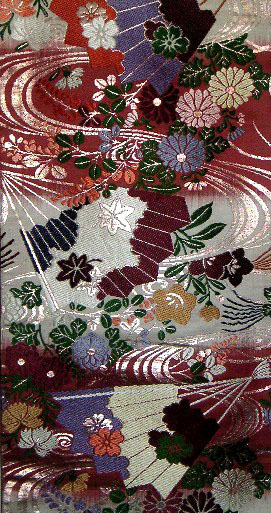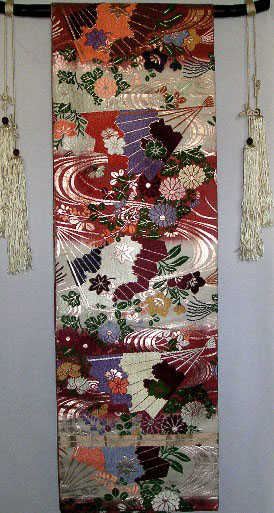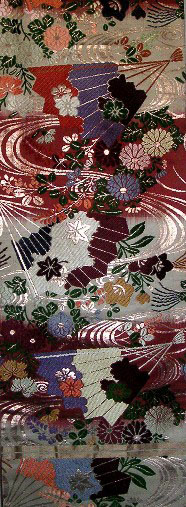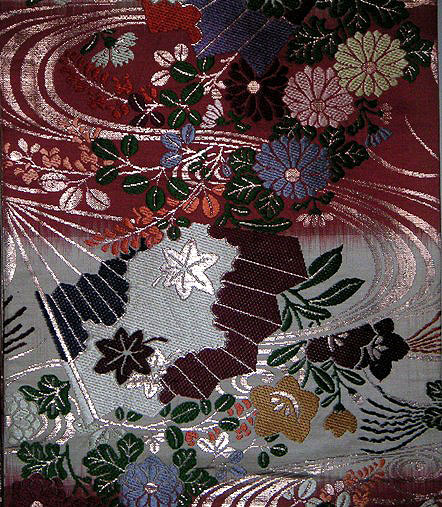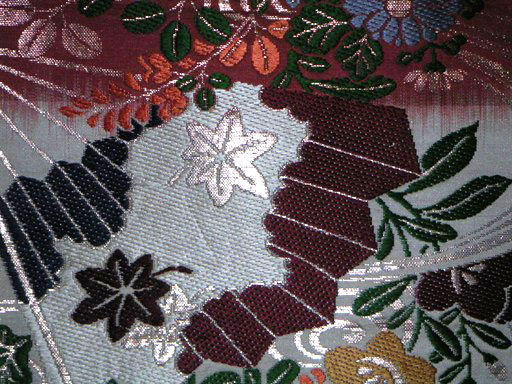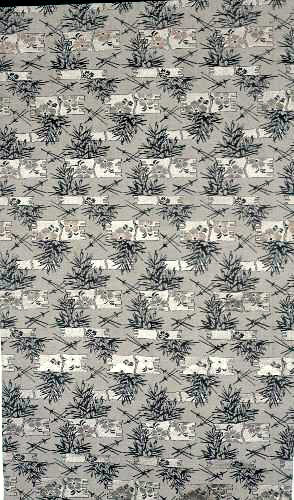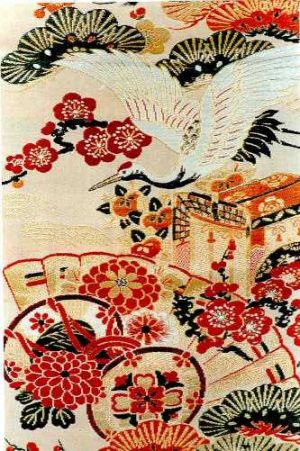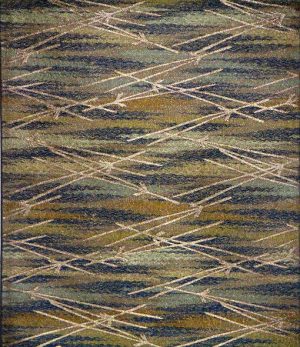Description
The extraordinarily brilliant coloring and heavy use of precious metals contribute to the one of a kind nature of this fabulous Obi found in Takayama, Japan.
This exquisite “Maru” Obi, the most formal of the Obi, has been hand woven of pure Silk and Gold threads, varying the weaving from a very tight and shiny pattern to one that mimics a tapestry. This is an extraordinary example of the most elaborate of the Maru Obi to be hand woven for Japanese women before the turn of the century. It has but one seam, meaning that the Obi was woven in one continuous panel before being folded over in such a way that the pattern was not lost in the fold. It is, however, the tremendous amount of precious metals that have been woven into the design that makes it absolutely unique. The yellow and white gold and copper is not only part of the intricacy of the pattern, it creates an overall sheen to this Obi that is unparalleled. Only a member of the nobility, someone with great wealth, could have commissioned the weaving of such a rich Obi.
Another outstanding feature of this Obi are the brilliant and unusual colors. They highlight the pattern of running water as it flows from one end of the Obi (in the form of a metallic stream) to the other, uniting the elements of the design. Superimposed over this river are Open Fans (“Sensu”) that portend the future waiting to be written, and numerous flowers and Maple Leaves (“Kaede”). The most prominent of these are the Chrysanthemum (“Kiku”), the flower of the Imperial Household, surrounded by the Paulownia Leaf (“Kiri”) considered a tree of good fortune and also known as the Crest (“Mon”) of the Empress of Japan; the Cherry Blossoms (“Sakura”), the scattering of which were strongly tied to the Samurai or romantic and poetic aesthetic; the Wisteria (“Fuji“), symbolic of long life, prosperity, and good fortune whose arbors are often referred to as a meeting place for lovers. Accenting the symbolism of the design is the color purple (“Murasaki”), the color of the Imperial Family. Because the brightness of the colors makes this Obi stand out and draw attention to it, it stands to reason that a young, unmarried woman would have worn this Obi. Older, married women were not to draw attention to themselves and, typically, wore more somber colors and designs.
The overall effect of this Obi is one of great prosperity, youth and beauty. The gold stripes at the bottom of the Obi denote that a woman of high rank and status, in all probably associated with the Imperial Court, wore this Obi.
A Certificate of Authenticity is included.
TTAC will personally pack and ship via UPS at company expense within the continental U.S.

